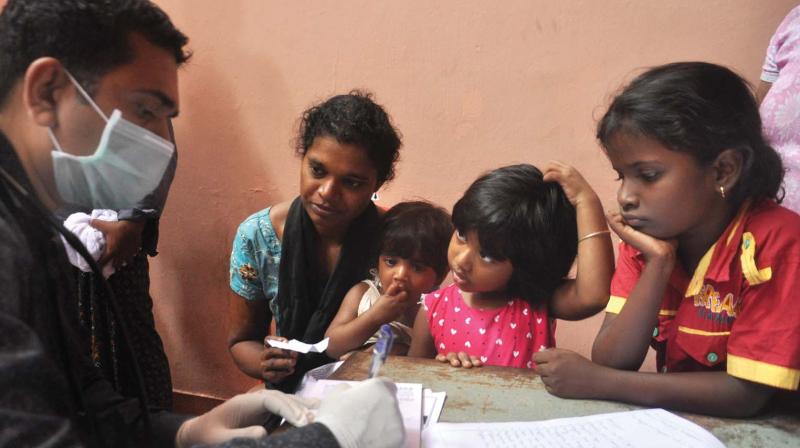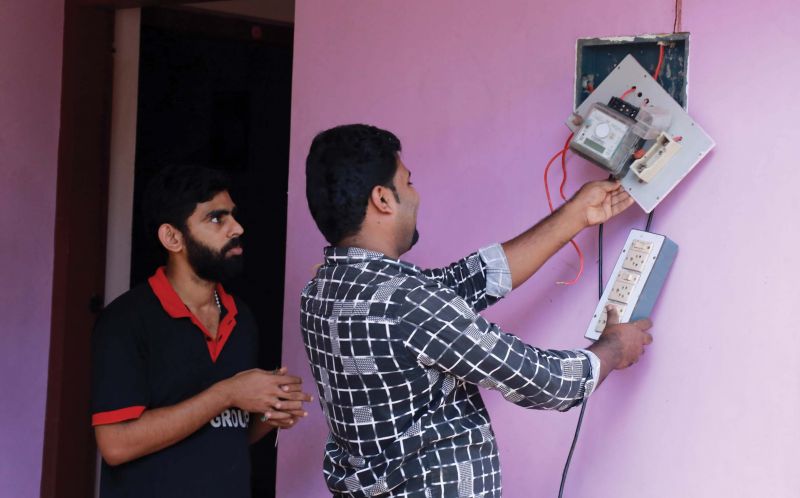Life after the deluge

What Kerala witnessed in the past few days is much hailed as a reference material in disaster management training, but is that all enough? Energetic volunteers from various walks of life and selfless fisher men community who, using their limited resources and limitless compassion, saved thousands from watery grave, but will unity always come to our rescue when a natural calamity strikes?
Ground for volunteers
What Kerala witnessed in the past few days has been hailed as a reference material for disaster management training. Energetic volunteers from various walks of life and the selfless fishermen who, using their limited resources and limitless compassion, saved thousands from watery graves. But will unity always come to our rescue when a natural calamity strikes? Muralee Thummarukudy, chief of Disaster Risk Reduction in the UN Environment Programme, in his informative post on social media suggests a few immediate measures to be adopted by volunteers in this post-flood period.
“Thousands of volunteers will have to work day and night for over a week to convert the flood-hit houses into a habitable condition. Proper organisation and guidance can result in effective services. Firstly, survey experts like retired village officers or even civil engineering, polytechnic and survey school graduates can help mark the flooded areas on both sides of the rivers by creating transects and use it later for ground-truthing. In case the satellite images of the area are obtained, these will be helpful in locating flood-prone areas and save generations,” he says.
As a second and important measure, Muralee suggests analysis of the structural safety of buildings. “Each house should be categorised into three – very safe (green signal), inhabitable after minor renovation (orange signal) and unsafe (red signal). If around 3,000 volunteers, including retired PWD civil engineers and students from colleges and polytechnics, can prepare a report based on the criteria of building safety, the whole survey can be completed before month end,” he says.
A similar planning is possible by electrical engineers, both retired officials and students too, who can examine the power connection, wiring and electronic equipment in each home, he suggests. Those with experience in remote sensing can also collaborate to assess the total loss of crops, houses, land, etc. “Public health experts and sanitation workers can test the water in the wells and premises of each house and institution using the testing kits NRIs are willing to donate,” he adds. Muralee also points out that a professional assessment of the calamity needs to be done based on a protocol prepared by civil engineers, commerce experts and agriculture scientists. He feels, “Services of highly-skilled volunteers are the need of the hour and with proper communication channels, thousands of them can work together following the same protocol and bring in the desired results.”

Health, the wealth
The time after floods is also the time of diseases. One needs to be extra cautious about health during this period. Floods can cause the transmission of two kinds of communicable diseases — water-borne diseases such as typhoid, cholera, leptospirosis and hepatitis A, and vector-borne diseases such as malaria, dengue and dengue haemorrhagic fever, yellow fever and West Nile fever. There is also a high chance of water-borne diseases such as infections, dermatitis, conjunctivitis and ear, nose and throat infections contracted through direct contact with polluted waters. But, these are not so epidemic-prone. The only epidemic-prone infection from direct contact to polluted waters is Leptospirosis.
Leptospirosis is a disease caused by Leptospira bacteria found in both wild and domestic animals.
How is it transmitted?
Direct contact with urine of infected animals or urine-contaminated water, damp soil, vegetation or mud
Swallowing of contaminated water or food
Symptoms:
High fever, severe headache, chills, redness in the eyes, jaundice, abdominal pain, diarrhea, vomiting, rashes, muscle pain, hemorrhages (in skin and mucous membranes)
Prevention:
Avoid swimming in or wading through floodwater
Wear protective clothes like boots and gloves
Control feral reservoirs and rats in the households
Treatment:
Use medicine prescribed by a physician
vector - borne
diseases
When it comes to vector-borne diseases, though flooding flushes out mosquito breeding, it returns as water recedes. The lag time is mostly around six to eight weeks before the beginning of a malaria epidemic. However, the risk of outbreaks linked to changes in pattern such as exposure to mosquitoes while sleeping outside or changes in habitat that causes mosquito breeding.
Short term preventive measures
Chlorination of water
Vaccination against Hepatitis A
Malaria prevention
Health education
Long term measures
Create Disaster-Preparedness Programmes and Early Warning Systems.
Improve surveillance on a local, national, international and global level.
Promote tap-water quality regulation and monitoring.
Enforce high standards of hygiene
Keep infectious disease control programmes active and efficient.
Fighting the trauma
What just engulfed us is unfathomable. The flood consumed a huge chunk of our property and prosperity. An entire community is affected. While the ones on dry land have lent a spirited hand, the ones who managed to come out with only their soul and skin must be in the grip of an internal conflict. The initial shock of what just happened may slowly lead to a kind of elation for their lives being saved, this will wane gradually. The extent of the damage or a deep assessment of it may not be on their minds immediately. But soon they will realise the loss of everything they held dear like important documents, certificates, money, gold and more.
“Post Traumatic Stress Disorder (PTSD) is found to be common in victims of natural disasters mainly due to the unpredictable nature of the calamity. People are never prepared enough for such devastation. This leads to anxiety, fear, stress and sleep issues, loss of appetite, lethargy and depression, which may or may not be long-lasting. Learned helplessness also is a common symptom that people display during disasters. They tell themselves that nothing is going to work and that their future is in darkness. They are in despair and distress and encounter ruminating thoughts.Suicidal tendency is another issue that is noticed in people having survived such disasters. Care givers must train them to be patient to go through the trauma as lack of patience can lead to increased learned helplessness, paving way to alcoholism and drug abuse. Some people are able to cope better; while some take a longer time. Some others never manage to come out of it effectively. However, coping skills depend on each individual. Some focus on the issue and cope accordingly, while others may display emotional avoidant coping strategies. The ones that remain unattended eventually develop long term-emotional issues. It is always better to deal with these cognitively rather than emotionally. The help of the agencies must focus on a long-term rehabilitating method wherein they prepare for continued support to these victims, thus rehabilitating them mentally as well. Improving motivation must be the way ahead and to be diligently followed by mental healthcare givers. Sustained support long after the aftermath is the only way of stabilising the fragile position they find themselves in right now. And an entire community must pledge themselves towards this. The reassurances and hand-holding are not to be restricted for just the present, it’s a long way ahead towards settlement, physically and mentally.”
– Shaarika Menon, Consultant Psychologist, Mindport

